The Colonel Bleep Pitch Bible
Disclaimer:
The following article was originally released on September 27, 2024 and
has been transferred from GoDaddy to Mozello for preservation purposes.
In my previous article, "Colonel Bleep and...The Older Test Pilot?", I wrote about the story of a film reel presenting a demo reel of what is most likely a test pilot for the original Colonel Bleep show back in 1956. You might have noticed a slideshow of a proposed series document in the art gallery, which you can find on the Original Archive. In this bi-weekly article, we will dig deeper into the Colonel Bleep pitch bible from one page to another.
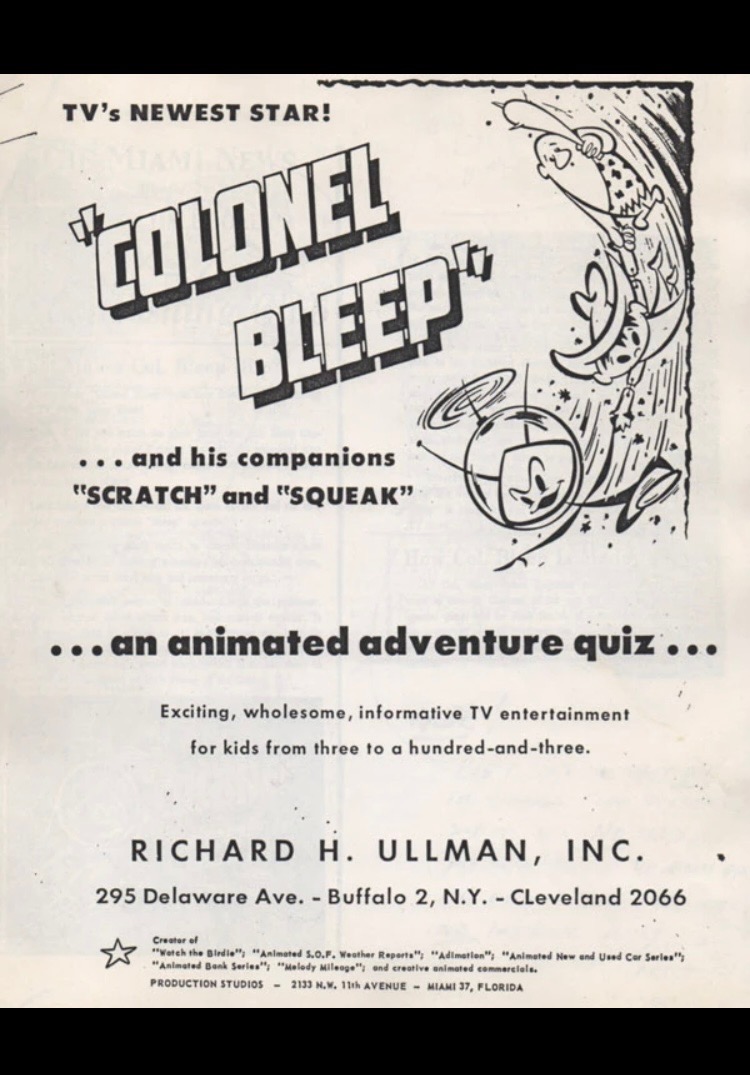
Title Page
The title page gives us a fresh start in learning what the show was supposed to be: an animated adventure quiz featuring TV’s newest star at the time. The first page features Colonel Bleep and his deputies soaring down from space. Below the design is the name and address of Richard H. Ullman Inc., a company that helped produce the show. There is also a list of other productions created by Soundac, such as forgotten game shows like Watch the Birdie and Melody Mileage, a series of weather reports starring the Weather Man, and names for specific collections of animated commercials.
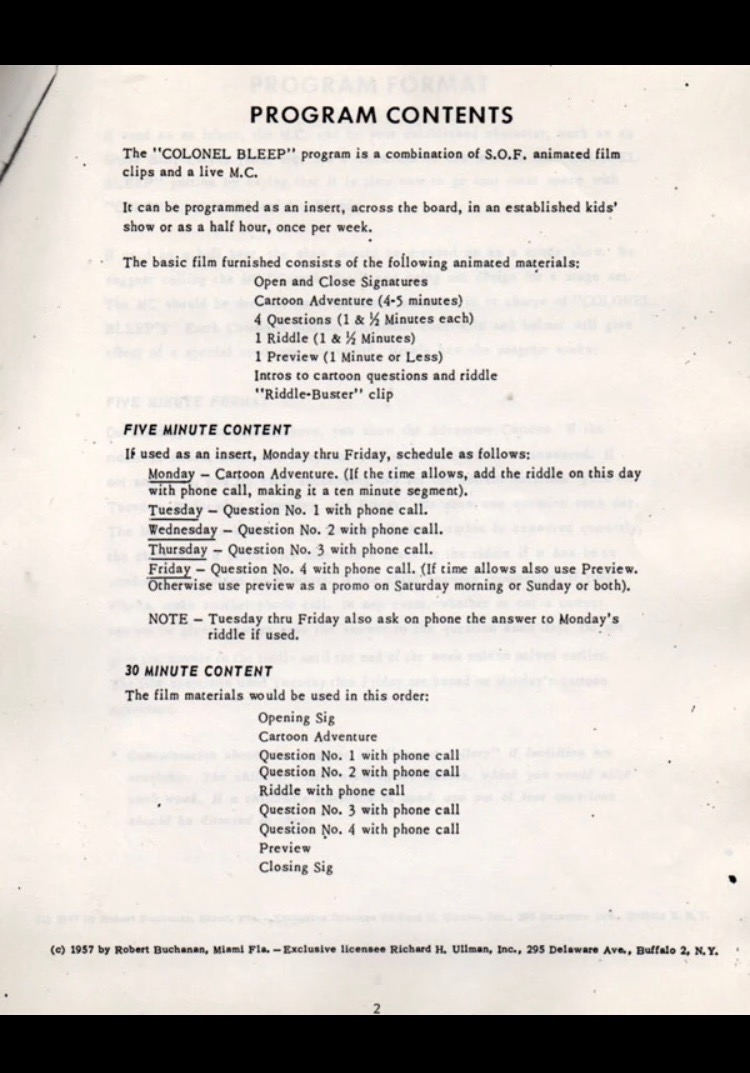
Program Contents
The second page depicts the show’s scheduling plan, which includes how long it should air for the week, either on weekdays or once a week (note: this was before the Saturday Morning Cartoon trend became a thing). If aired on the weekdays, each show episode would last for five minutes a week, with one cartoon episode and a new riddle appearing once every Monday. The rest of the days would feature a new quiz for the children to answer when possible. On Friday (if time allows), a preview of the next episode will be announced. If aired once every week, the show would last for thirty minutes, starting with the opening sequence, a cartoon episode, the first two quizzes, the riddle, two more quizzes (all with phone calls), and the closing sequence. I believe that Soundac preferred the 30-minute sequence for Colonel Bleep since it was easier to pack the cartoons, the quizzes, and the riddles in one, meaning more time for preparing the show.
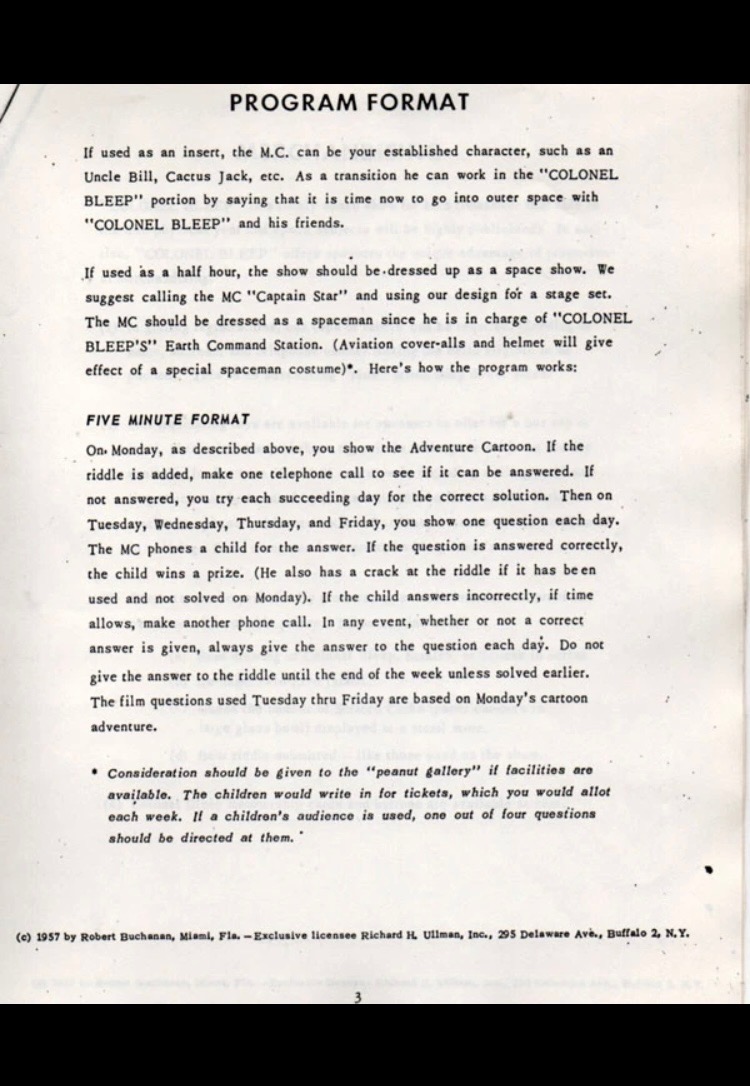
Program Format
More planning for the show involves hiring a host portraying a specific character like Captain Star, Cactus Jack, or Uncle Bill (it was often confused that Colonel Bleep first aired on a so-called syndicated children’s program, Uncle Bill’s TV Club). The set promoting Colonel Bleep is supposed to resemble an Earth Command Station, tying the show’s theme to the Space Age. There is also a more detailed explanation of the five-minute format for the show, such as how prizes are awarded to the children (if they answer a question correctly) or to give them another chance to answer a question if they failed in a previous one. There are also suggestions for a peanut gallery for children who want to attend the quiz show on their local TV station.
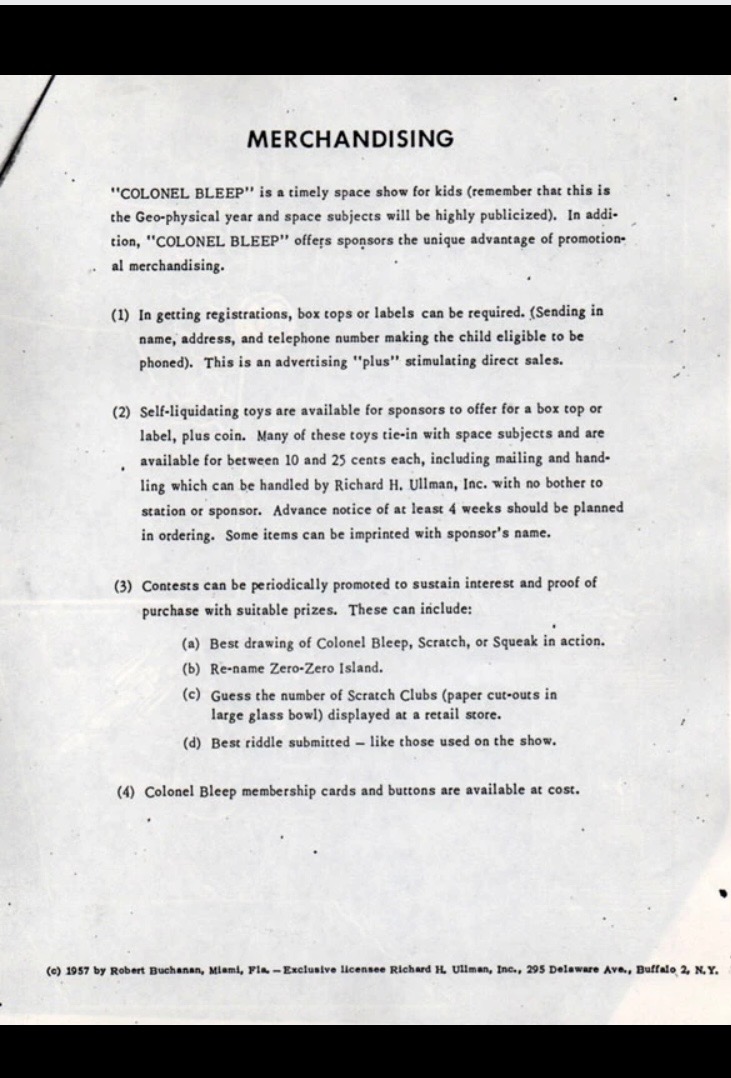
Merchandising
Some unique strategies in promoting the show are labels on food products for children who want to participate in the quiz show, such as mailing their name, address, and phone number to their local station. As for many cartoons in the 20th century, toys and other merchandise were based on the shows through self-liquidation and under the sponsorship of specific brands, such as the Loblaws supermarket chain. Apart from merch, the show can host contests for the best drawings, a new name for Zero-Zero Island (take Null Island, for example), the best riddle submitted, or how many paper cutouts of Scratch’s club in a jar.
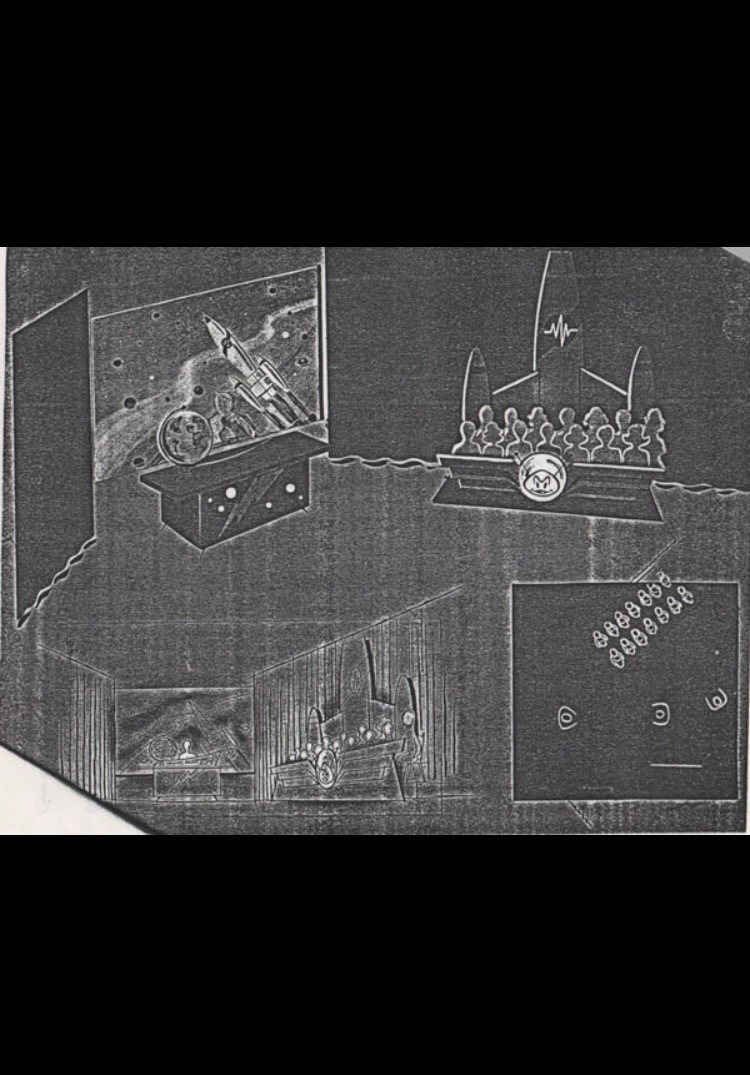
Concept art of the set
The last page of the series features concept art for the proposed set for The Colonel Bleep Show. The design is similar to the stage scenery from the demo reel featured in the previous article, with a few cardboard cutouts of the rocket from the opening sequence, a background art of space, and a peanut gallery with Colonel Bleep’s face upfront. The scenery offers some flare in representing the Golden Space Age, the practical charm of the original series.
Now, it may be a bit disappointing to many as it does not compare to other pitch bibles like Star Trek, My Little Pony: Friendship is Magic (initially titled My Little Pony Adventures), Stranger Things (initially titled Montauk), or Adventure Time, which all do excellent descriptions of worldbuilding, storytelling, and introducing the characters. While I understand the people of Soundac were more into making Colonel Bleep a game show, some aspects the creators should have included are short descriptions of each character (precisely the main three), a simple premise for the cartoons, and a list of episodes they plan to produce (which could have given us some hints of episodes that are still missing today). Nevertheless, it at least provided some constructive planning on how Soundac wanted TV stations to promote the show and fulfill the company’s business as it would become one of Soundac’s most successful productions at its time.
